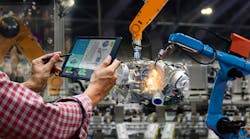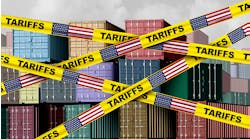Automation Is Not to Blame for Growing Income Inequality
Opinion/Analysis
For at least four decades, wages have grown more slowly for less-educated workers than workers with more education, although the gap is often exaggerated. But to be sure, income growth has not been as broad-based as it was in the post-war period. The key question is why?
Many neoclassical economists have laid the blame on technological change, arguing first that it was biased in favor of workers with more skills. If more workers would just go to college, all would be well.
But this “skill-biased technological change” (SBTC) argument never made sense because the growth in inequality among workers with a college degree was higher than between workers with and without college. As the Economic Policy Institute points out, “The flat or declining 50/10 wage gap in the 30 years after 1987 is inconsistent with the skills-gap narrative, since middle-wage workers who have more education than low-wage workers have not reaped a growing advantage since then.” (The 50/10 wage gap refers to the average wages of workers in the 50th income percentile vs. those in the 10th percentile.)
The newest flavor of the “blame technology” argument is that automation has caused inequality. This is a much more dangerous argument. In contrast to the SBTC argument that logically led policies to get more people to go to college, the automation argument leads to destructive policies to limit automation and productivity growth, such as robot taxes.
The biggest proponent of this claim is economist Daron Acemoglu, who argues that the growth in income inequality is due to automation impacting lower-wage jobs more than higher-wage jobs and leading to excess lower-wage workers relative to labor demand. But this notion is even more flawed than the original SBTC argument.
First, Acemoglu points to data showing the increase in divergence of wage growth by education starting in 1981. I wonder what could have started in 1981? Could it have been the rise of the Reagan revolution and the weakening of unions, the increase in low-skill immigration, and minimum wage stagnation?
What’s even more illogical about blaming automation for slow wage growth among the less educated is that labor productivity after 1981 was, for the most part, quite low. Automation, including routine tasks, was much higher in the 1950s and 60s when inequality had declined.
Acemoglu also looks at average wage growth for each education group to show growth in inequality. But this overlooks the enormous growth of the top 5 percent of earners, making it look like the lower growth among non-college degree workers is due to education. As EPI notes, there has been dramatic growth in the 95/50 wage gap.
Perhaps the most problematic for this automation argument is that the skill composition of U.S. jobs has not significantly changed over the past two decades. The demand for lower-skill jobs has not materially changed. Jobs requiring a college degree or more stayed constant at 22 percent of all jobs from 1998 to 2008, while jobs requiring only short-term or moderate-term on-the-job training decreased slightly from 53 percent to 51 percent; hardly a dramatic drop in demand for low-skilled workers. At the same time the growth of less-educated workers from immigration has been significant. Foreign-born Americans with less than a college degree went from 9 million in the mid-1970s to 37 million in 2018.
So if we want to boost the wages of the bottom half of the labor market, rather than limit automation, policymakers should instead support accelerated automation so employers can afford to pay their workers more. Instituting an investment tax credit for new machinery would be a great start, but absent that, preserving the ability of all firms to expense equipment investment in the first year for tax purposes would also be a big help.
At the same time, policymakers should require all employers, big and small, to provide health insurance and paid vacation and family leave for their workers. In addition, we need to significantly increase the minimum wage, and at the same time, limit low-skill immigration, while enabling unions to organize workers more effectively.
In short, if we want growth with opportunity, we need more tech and automation, not less.
Robert D. Atkinson is the founder and president of the Information Technology and Innovation Foundation (ITIF), a think tank for science and technology policy.
This article originally appeared on the ITIF blog. It is reprinted with permission.




